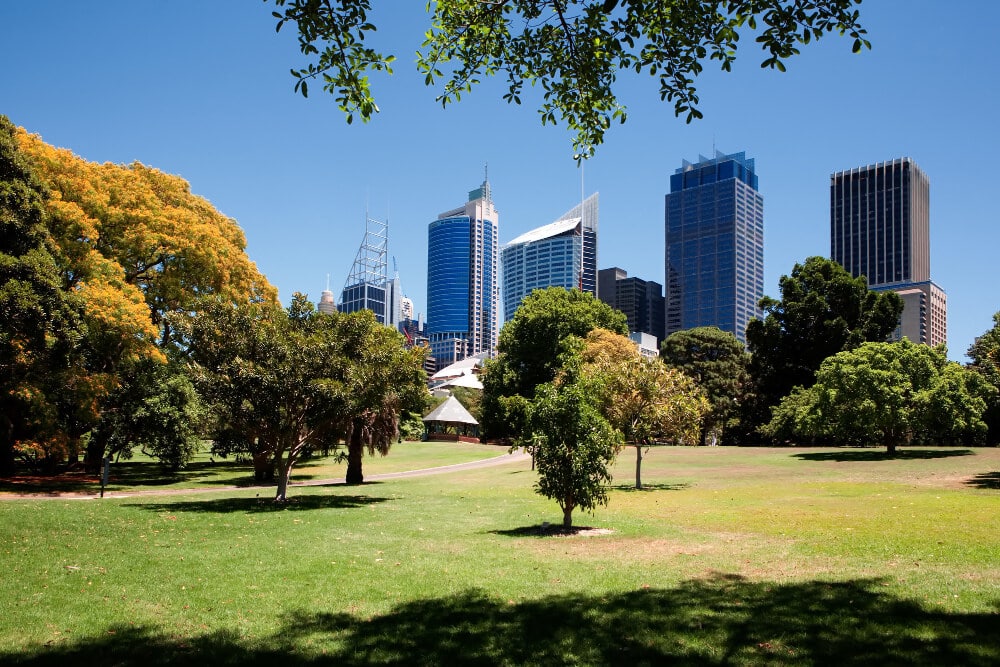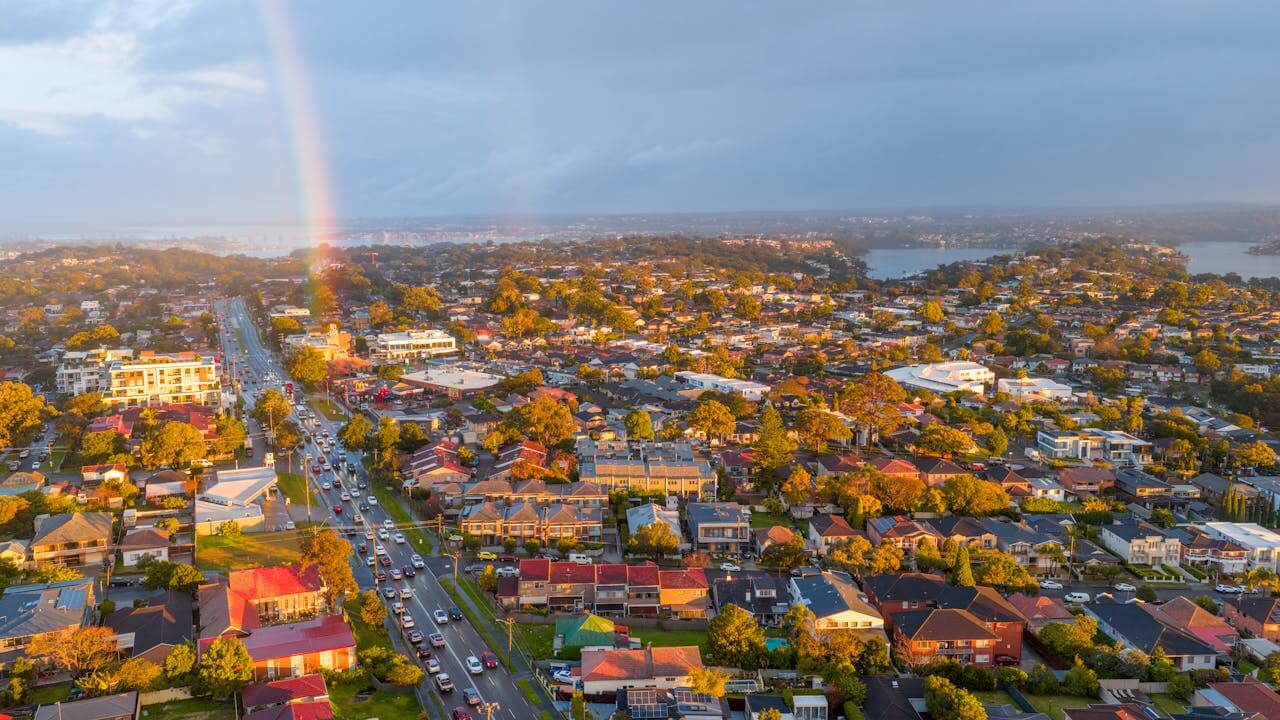Brisbane and Melbourne stand as two of Australia’s most compelling investment destinations, yet they represent completely different investment strategies. Brisbane is driving short-to-mid-term off-market growth, while Melbourne is positioning for its next long-term growth cycle. Understanding their off-market property markets, growth drivers, and capital potential helps investors choose the right strategy for their goals and risk profile.
Both cities offer excellent off-market opportunities, but the question remains: which delivers better growth for investors in 2025 and beyond?
Brisbane’s Investment Appeal
Brisbane has become Australia’s standout performer, recording 99.7% of profitable resales in recent quarterly analysis; outperforming both Sydney and Melbourne. Median resale gains exceeded $400,000, with house prices rising 8.1% year-on-year, supported by 4.5% rental yields and strong migration demand.
Population Growth and Migration
Queensland continues attracting interstate migrants from Sydney and Melbourne, creating sustained buyer competition. This population inflow is driving demand across Brisbane’s growth corridors, particularly in affordable outer suburbs where families can secure larger homes at lower entry prices.
Key Infrastructure Projects
Brisbane’s infrastructure pipeline is delivering tangible results now, not in decades:
- Cross River Rail: Improving connectivity between CBD and outer suburbs
- Queen’s Wharf: Opening in 2025, projected to create thousands of hospitality and retail jobs
- Olympic 2032 projects: Accelerating development across South Brisbane, Gabba, and Hamilton Northshore
These projects offer visible return potential within 3-5 years, making them ideal for equity-focused investors.
Rental Yield Performance
With vacancy rates below 1.2% across key corridors and rental yields averaging 4.5%, Brisbane offers superior cash flow compared to Melbourne. This combination of low vacancy and high yields creates a strong foundation for investment returns.
Melbourne’s Investment Appeal
Melbourne’s market is stabilising after years of underperformance. Growth has reached 4.3% annually, but values remain 20-30% below peak-adjusted Sydney and Brisbane equivalents; offering investors a significant “catch-up” opportunity at relatively low entry prices.
International City Status
Melbourne’s established status as an international hub continues driving long-term demand. The city’s reputation for education, culture, and livability attracts consistent migration and investment, creating sustainable growth foundations.
Migration and Education Economy
International students and skilled migrants are returning post-pandemic, supporting rental demand and housing needs. Melbourne’s education sector remains a key economic driver, particularly around university precincts where rental demand stays consistently high.
Infrastructure Projects
Melbourne’s infrastructure investments focus on long-term transformation:
- Suburban Rail Loop: Revolutionary transport connectivity (timeline 8+ years)
- Airport Rail Link: Direct airport access improving accessibility
- Major urban redevelopments: North and West corridor revival creating new employment hubs
These projects represent generational change with payoffs extending well beyond 2030.
Rental Market Comparison
Melbourne’s rental yields average 3.6% with vacancy rates at 1.4%; tighter than historical averages but below Brisbane’s performance. The rental market is stabilising, with growth expected from 2026 as supply constraints continue.
Off-Market Property Opportunities: Brisbane vs Melbourne
Brisbane Off-Market Dynamics
Brisbane’s off-market ecosystem has expanded dramatically. Listing reductions of 17.3% year-on-year mean fewer properties are publicly advertised, pushing more transactions into off-market channels through agent networks.
Why Brisbane’s Off-Market Market is Growing:
- Population inflow: Sustained interstate migration creating buyer competition
- Infrastructure catalysts: Olympic and Queen’s Wharf projects driving urban renewal
- Affordability advantage: Entry-level properties around $600,000 vs Melbourne’s $650,000-$700,000
- Supply constraints: Vacancy below 1.2% supporting price stability
Top Brisbane Off-Market Areas:
- Logan corridor: Affordable yields, infrastructure access, family rental demand
- Ipswich: Rapid redevelopment with manufacturing and logistics sector growth
- Springfield Lakes & Moreton Bay: Planned suburbs with rail connectivity
- Redcliffe Peninsula: Coastal lifestyle with consistent investor appeal
Off-market purchases in Brisbane frequently deliver 3-8% below-market values because agents connect motivated sellers with pre-approved buyers before public listings. This provides immediate equity uplift after settlement.
Melbourne Off-Market Dynamics
Melbourne’s off-market segment is smaller in volume but growing in quality. Total listings are down 15.6%, creating structural shortages across inner and middle-ring suburbs, pushing agents toward private networks for serious buyers.
Why Melbourne’s Off-Market Growth is Recovering:
- $100B+ infrastructure pipeline: Suburban Rail Loop and Airport Rail Link driving long-term growth
- Migration rebound: International students and skilled migrants returning post-pandemic
- Relative value: Melbourne houses remain 11% cheaper than Brisbane; reversing the 2019 premium
- Rental tightness: Vacancy below 1.4%, particularly in middle-ring family suburbs
Top Melbourne Off-Market Areas:
- Eastern middle ring: Glen Waverley, Blackburn, Ringwood (family demand plus urban renewal)
- Western growth corridors: Tarneit, Fraser Rise, Werribee (affordability plus infrastructure access)
- Inner north: Brunswick, Preston, Thornbury (strong yields and urban renewal)
- Bayside: Cheltenham, Mentone, Parkdale (steady capital growth with lifestyle appeal)
Melbourne’s off-market purchases offer timing advantages since values remain 2.7% below pre-pandemic highs. The opportunity lies not in steep discounts but in buying before full recovery cycles are priced in.
Capital Growth Comparison: Brisbane vs Melbourne
Growth Trajectory Analysis
Brisbane is currently outpacing Melbourne across most metrics:
- Brisbane median house price: $949,538 (8.1% growth year-on-year)
- Melbourne median house price: $936,000 (4.3% growth year-on-year)
- Brisbane average resale profit: $400,000 median (99.7% profitable)
- Melbourne average resale profit: $310,000 median (94.9% profitable)
Future Growth Projections
Brisbane (2025-2028): Short-term peak expected as Olympic projects complete and infrastructure delivers results. Growth may moderate after 2028 as projects finalise.
Melbourne (2027-2035): Long-term appreciation cycle beginning as infrastructure projects progress and market recovery continues. Projected 5-10% appreciation through 2026 as undervaluation corrects.
Infrastructure Return Timeline
Brisbane’s infrastructure investments deliver results within 3-5 years, while Melbourne’s major projects require 8-12 years for full impact. This timeline difference significantly affects investment strategy and return expectations.
Suburb Insights: Where to Invest
Brisbane Investment Suburbs
Logan: Strong rental demand from families seeking affordability between Brisbane and Gold Coast. Infrastructure improvements and employment growth supporting long-term prospects.
Ipswich: Major redevelopment program underway with rail connectivity improvements. Manufacturing and logistics sectors driving employment growth.
Redcliffe Peninsula: Coastal lifestyle appeal with consistent investor demand. Limited supply supporting price stability and rental yields.
Melbourne Investment Suburbs
Footscray: Inner-west gentrification continuing with strong transport links. Young professional demand supporting rental growth.
Werribee: Western growth corridor benefiting from employment decentralisation. Affordability attracting families and first-home buyers.
Frankston: Bayside location with development potential. Infrastructure improvements planned supporting long-term growth.
These suburbs offer different risk-return profiles, with Brisbane areas providing shorter-term growth and Melbourne suburbs offering longer-term appreciation potential.
Factors Investors Should Consider
Entry Affordability vs Long-term Stability
Brisbane offers lower entry costs with immediate growth potential, while Melbourne provides stability with longer-term appreciation. Consider your investment timeline and capital availability when choosing between markets.
Rental Yields vs Growth Potential
Brisbane’s superior rental yields (4.5% vs 3.6%) provide better immediate cash flow, while Melbourne’s undervaluation offers greater long-term capital appreciation potential.
Personal Investment Strategy Alignment
Short-term investors seeking quick equity gains should consider Brisbane’s current momentum. Long-term wealth builders may find Melbourne’s recovery cycle more attractive for sustained growth.
Frequently Asked Questions
Which city offers better off-market opportunities right now?
Brisbane currently offers more off-market opportunities with better immediate returns due to strong migration, infrastructure completion, and supply constraints. Melbourne offers quality opportunities but with longer-term payoffs.
How do infrastructure projects affect off-market property values?
Infrastructure projects create growth zones where off-market properties often appreciate faster than publicly listed properties. Brisbane’s near-term projects (Olympic 2032, Queen’s Wharf) provide quicker returns than Melbourne’s longer-term infrastructure pipeline.
Should I invest in both markets for diversification?
A dual-city strategy can provide portfolio balance; Brisbane for near-term growth and cash flow, Melbourne for long-term capital appreciation. This approach spreads risk across different market cycles and growth timelines.
How much below market value can I expect with off-market purchases?
Brisbane off-market properties typically achieve 3-8% below market value due to motivated sellers and limited competition. Melbourne off-market discounts range 2-6%, with value coming more from timing than steep discounts.
Which market is better for first-time investors?
Brisbane may suit first-time investors seeking immediate equity growth and strong rental returns. Melbourne appeals to patient investors comfortable with longer-term strategies and delayed gratification.
Making Your Investment Decision
Brisbane currently leads for short-term off-market growth, offering superior rental yields, lower entry costs, and faster infrastructure returns. The city’s 99.7% profitable resale rate and strong migration patterns support continued near-term performance.
Melbourne presents a compelling long-term opportunity, with infrastructure investments creating generational change and current undervaluation providing significant catch-up potential. Patient investors may find Melbourne’s recovery cycle delivers superior long-term returns.
For the next 3-5 years: Brisbane offers better off-market growth opportunities with immediate equity potential and strong cash flow.
For the decade ahead: Melbourne’s infrastructure transformation and market recovery position it for sustained long-term appreciation.
The optimal choice depends on your investment timeline, risk tolerance, and financial goals. Brisbane suits investors seeking quick equity growth and immediate returns, while Melbourne appeals to those building long-term wealth through patient capital appreciation.
Consider consulting with House Finder to explore off-market opportunities in both markets and develop a strategy aligned with your investment objectives. Our team can help you access exclusive listings and secure properties at below-market values in both Brisbane and Melbourne’s most promising growth areas.



